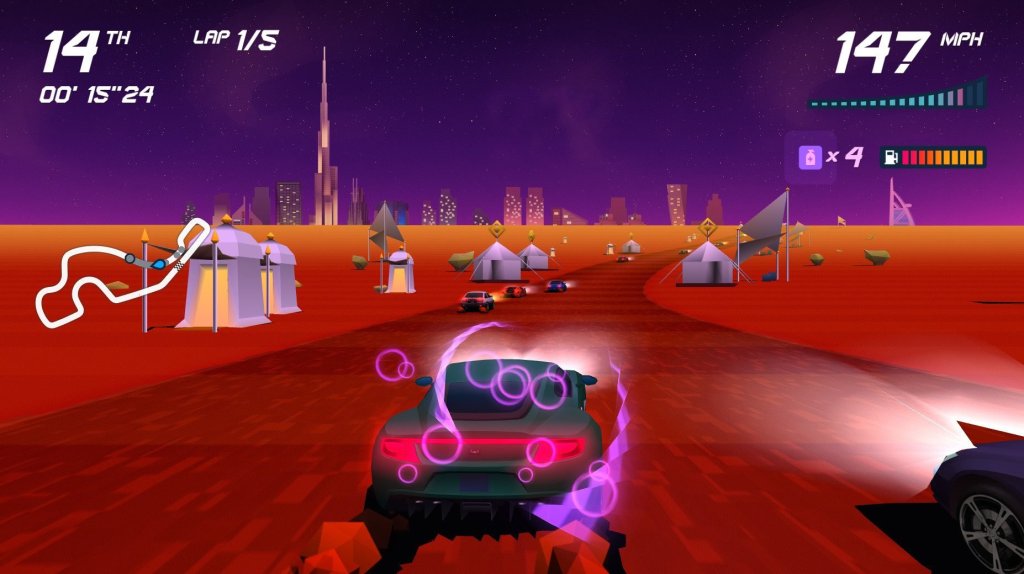In 1986, the one of the most influential racing games on the planet, Out Run, hit the arcades hard. By the time it came to home consoles two years later, it had become among the most critically acclaimed games in the world.
Over the next several decades, racing games have evolved in look and in mechanical depth, yet no racing game can escape is genetic connection to Out Run. Every racing game made since is less than six degrees from Out Run, but it’s been a pretty long time since there has been a console game developed to pay as close an homage to the source material as Horizon Chase Turbo does.
The Revival
The original Horizon Chase debuted on mobile screens in 2015, bringing that “Sega-core” rally racing nostalgia to small screens in a big way. It was a small game, and it cleverly navigated the constraints of iOS and Android-based phones. But there is no replacement for buttons or wheels when it comes to racing games.
Seeing Horizon Chase go Turbo is promising then. The vision gets to be fully realized in high def, at higher frame rates, and with a higher level of control. But even as the package has expanded in scope, much of the expansion is surface level and samey. It’s great for everyone looking for a modern update of the game they grew up on. It may disappoint anyone hoping that this could be the first step in an evolution of the old genre.
Every Horizon race begins the same way, with a tense countdown where you and a varying field of opponents threaten each other with engine revs. At “GO,” you sprint off the blocks and spend the next several laps twisting around sharp banks and weaving your way up the chain to the coveted first place slot. At the speeds you’re going, one turned taken too quickly or one small graze from an opponent can lead to disaster.
The arcadey, bumper cars physics of Horizon create inconsistent results when collisions happen. Sometimes, hitting a sign on a turn can stop you dead in your track. Other times it doesn’t have any noticeable an effect on your speed. Though the recovery time is quick either way, it’s a somewhat unreliable experience.
Same with hitting other cars. Sometimes tapping a car parallel to you can send you both repelling off into the shoulders. others it’s a love tap, both cars roaring onward, unfettered. Bumping a car in front of you can even give them a boost. As your skill improves and you become a better driver, you hit things less and these issues vanish. A frustrating learning curve stands in front of players until then.
On Track
Tracks come in large variety of shapes and sizes. The shapes of the tracks themselves range between simplistic, and intense. Some of the longer tracks – featuring rapid hairpin turns between long stretches of open road – are an absolute blast. Better than the roads themselves are the gorgeous locations they’re all set in. The backgrounds are beautiful expressions of simple yet poignant color palettes and shading. The architecture and flora are all rendered in abstract blocks, but its never difficult to understand what they represent. Plus, they’re almost always vibrant and radiating with eye-catching hues. On more than one occasion did I have to restart a race because I was too busy taking in the scenery.
The tracks themselves make races feel one-dimensional, though. There are two different types of roads, paved and dirt, and some sparse weather effects. The handling and acceleration on dirt roads or during rain is worse than paved. That is the extent of the hazards you’ll encounter that aren’t other players. As this isn’t bad thing, it means that your races will only be as fun as the people your racing against. Something to keep in perspective knowing you’ll be racing through over 100 tracks across 12 location-based cup circuits solo.

Each race is scored based on your performance in them. Placing high is the best way to get the biggest score, but there are collectables scattered across the roadways to keep things interesting. Blue tokens adorned with checkered flags are in every race, and must be collected in total to receive the highest possible score for each race. These are laid out in easy-to-collect patterns, but knowing where to be on the track when they whiz by you is adds an interesting strategic element. Same goes for the fuel tanks, which you’ll have to collect to keep your car running, or else putter out to a crawl. The fuel is a much bigger deal in longer races, though collecting a small amount can also affect your score.
If you’re having issues getting 1st place in some races, it may be best to return to them after you’ve unlocked some of the 31 unlockable cars with the medals you accumulate through the World Tour mode. Each of the 12 cups has a bonus race that, if you place 1st in, you can unlock upgrades that affect your entire garage. Besides besting your friend’s times and score-chasing on the leaderboards, this a good reason to revist old, unperfected areas once in awhile.
Lonely Road
Speaking of friends, split-screen, four-player multiplayer is supported but not online play. Playing with friends is where you’ll find the most fun in Horizon. It’s not about grinding races to unlock modes or cars when four people are squashed on the couch, badgering each other for supremacy. It’s a large disappointment that there’s no way to do that over the Internet, where folks in 2018 may also have friends that they want to badger.
That’s a good example of the many ways sticking to the script that Pole Position and Out Run have written plays to Horizon’s detriment. Leaderboards and ghost cars seem like modern additions to the Sega-style rally car sub-genre, but these things have existed for years in the greater racing game landscape. Horizon is a game designed for multiplayer, that lacks the most ubiquitous way for video games to be played by many people at once. It is more an eye-rolling omission than adherence to tradition.
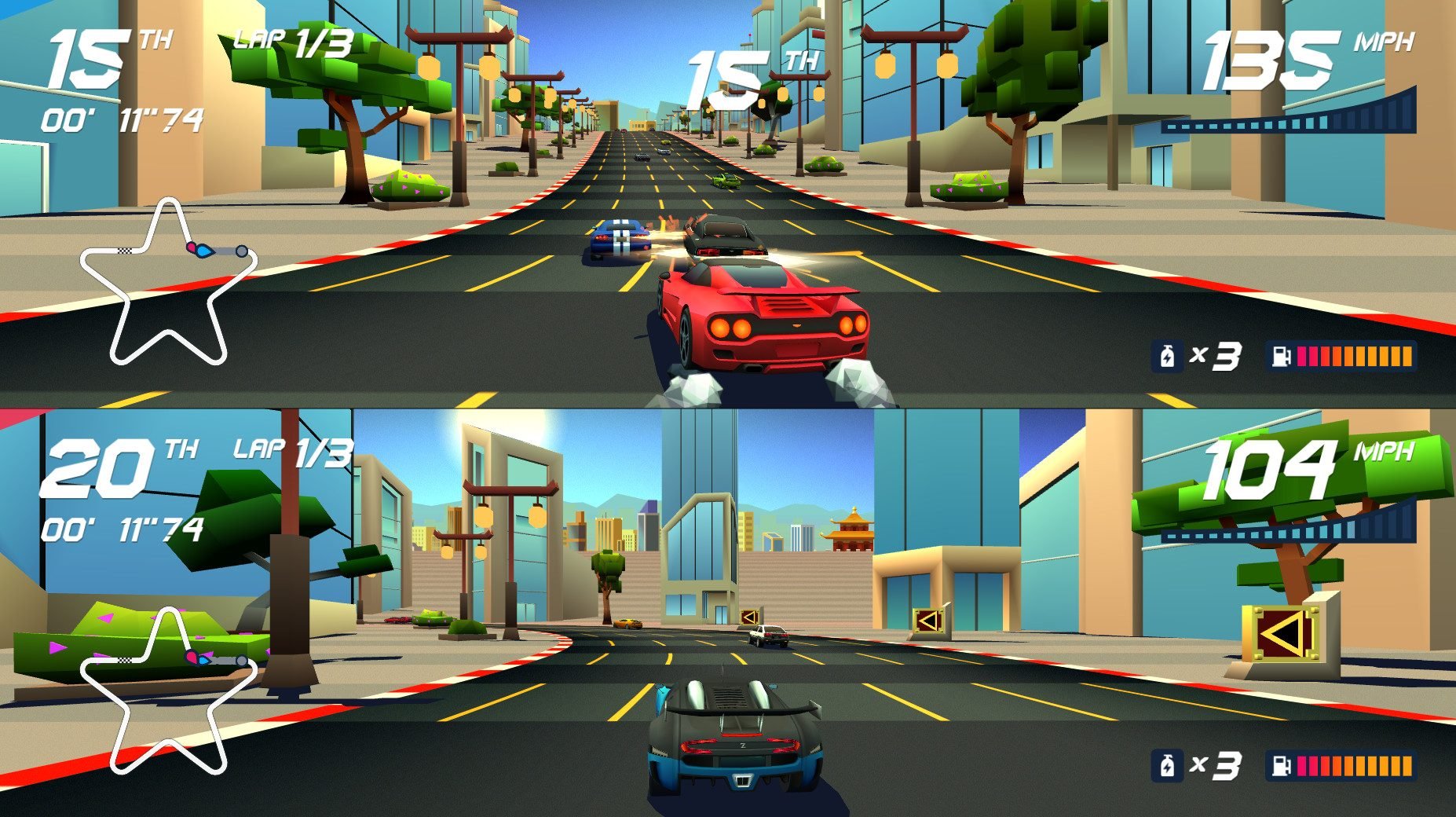
Where tradition gives Horizon a big boon is its audio. The sound track is both catchy and motivating, becoming a real focal point in the meditative experience that zooming around tracks can be. The music bleeps, bloops, and twinkles like a 16-bit soundtrack would if remade with modern equipment. Barry Leitch, of Top Gear fame, should be very proud of his work here.
Outside of the music, the sounds of tires squealing around bends and engines roaring at high speeds is top notch for this sort of racer. It’s not life-like, but is almost a distilled and remixed version of life like that feels right at home in this technicolor joyride.
There is lots of fun to be had with Horizon Chase Turbo, especially if you’re looking for a modern successor to games that have long since been out of arcades. It is a worthy replacement for Out Run, in that it does everything those games did but with a shiny coat of paint and some bells and whistles that are genre-staples nowadays. It doesn’t make any noticeable attempt to improve on that formula in anyway, though. For someone looking for something a little more than sprinting around flat tracks in pretty places (or playing online with your friends) you may be left in the dust.
Horizon Chase Turbo review code provided by Aquiris Game Studio. Version 1.52 reviewed on a PlayStation4. For more information on scoring please see our Review Policy here.
-
Captures that long-lost arcade feel
-
Visuals are top-notch
-
Lots of tracks and cars to unlock
-
No online multiplayer
-
Not enough race variety
Horizon Chase Turbo Review
-
Split-Screen Racing

Two players kick it old school in split-screen action.
-
Split-Screen Car Selection

Comparing a pair of the the 31 unlockable vehicles.
-
Cup Selection
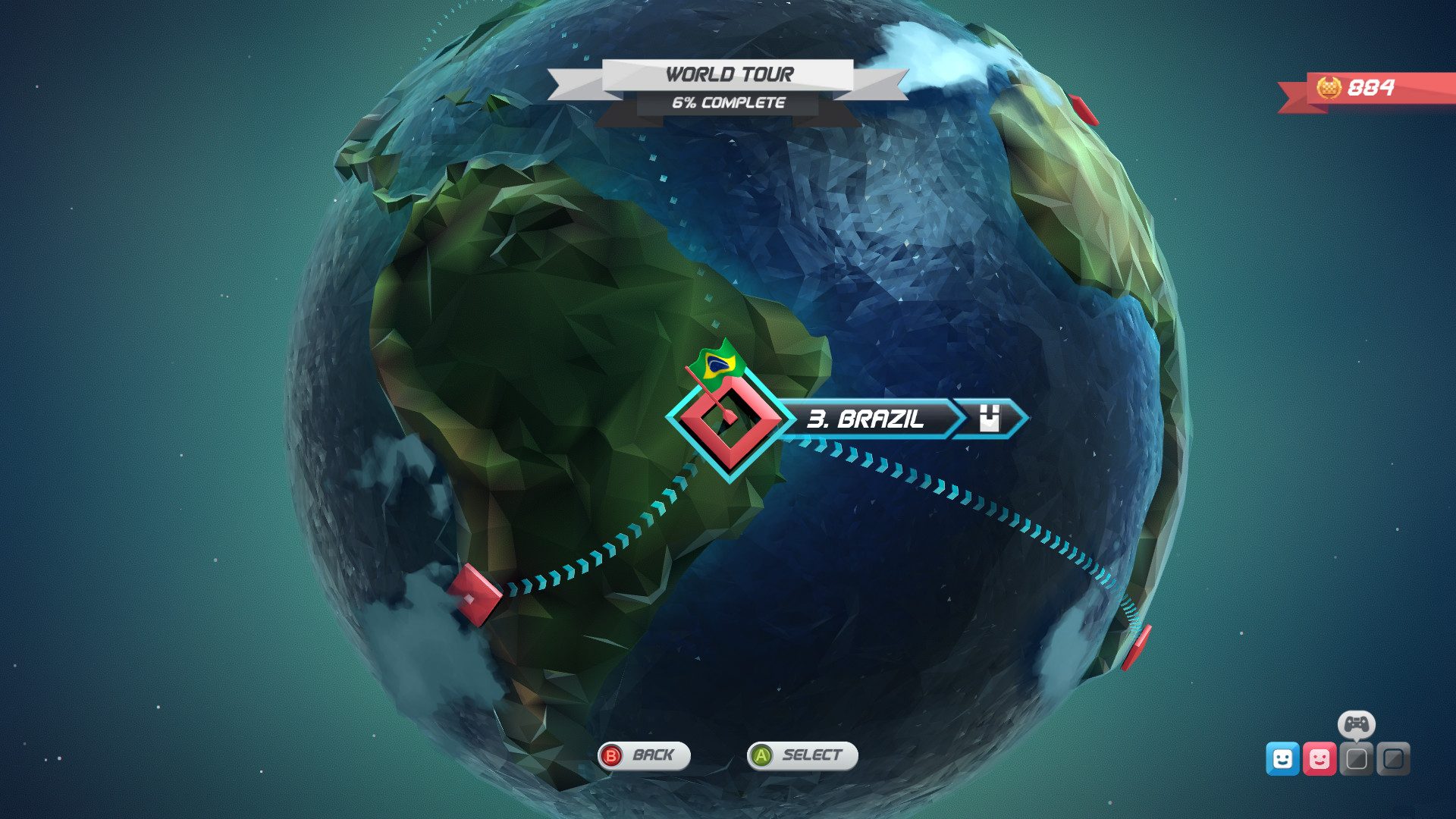
Brazil is one of the 12 locations on the map to choose races from.
-
Color Spray
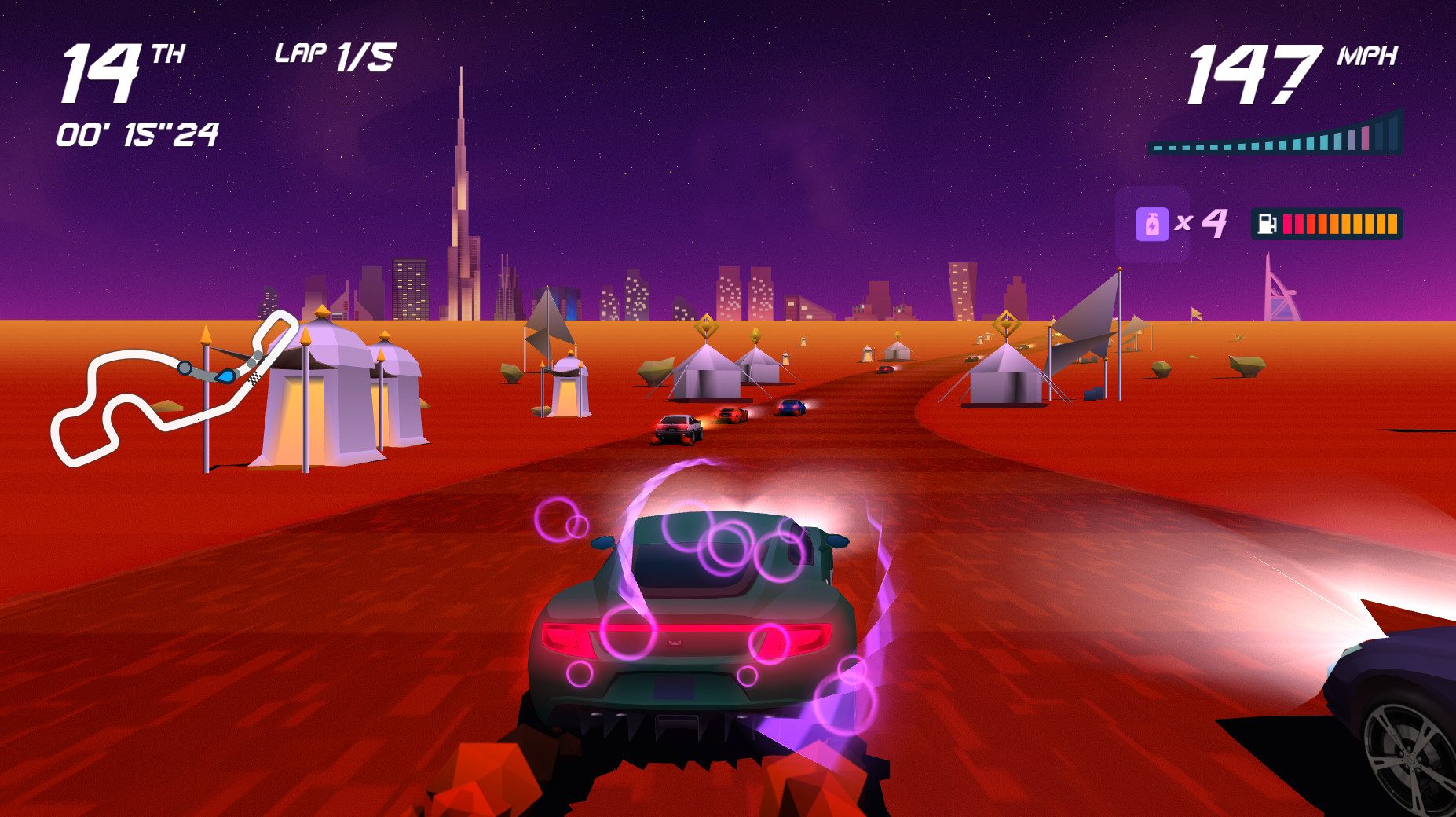
The color palette in Horizon Chase Turbo is vivid.
-
Four-Way Multiplayer
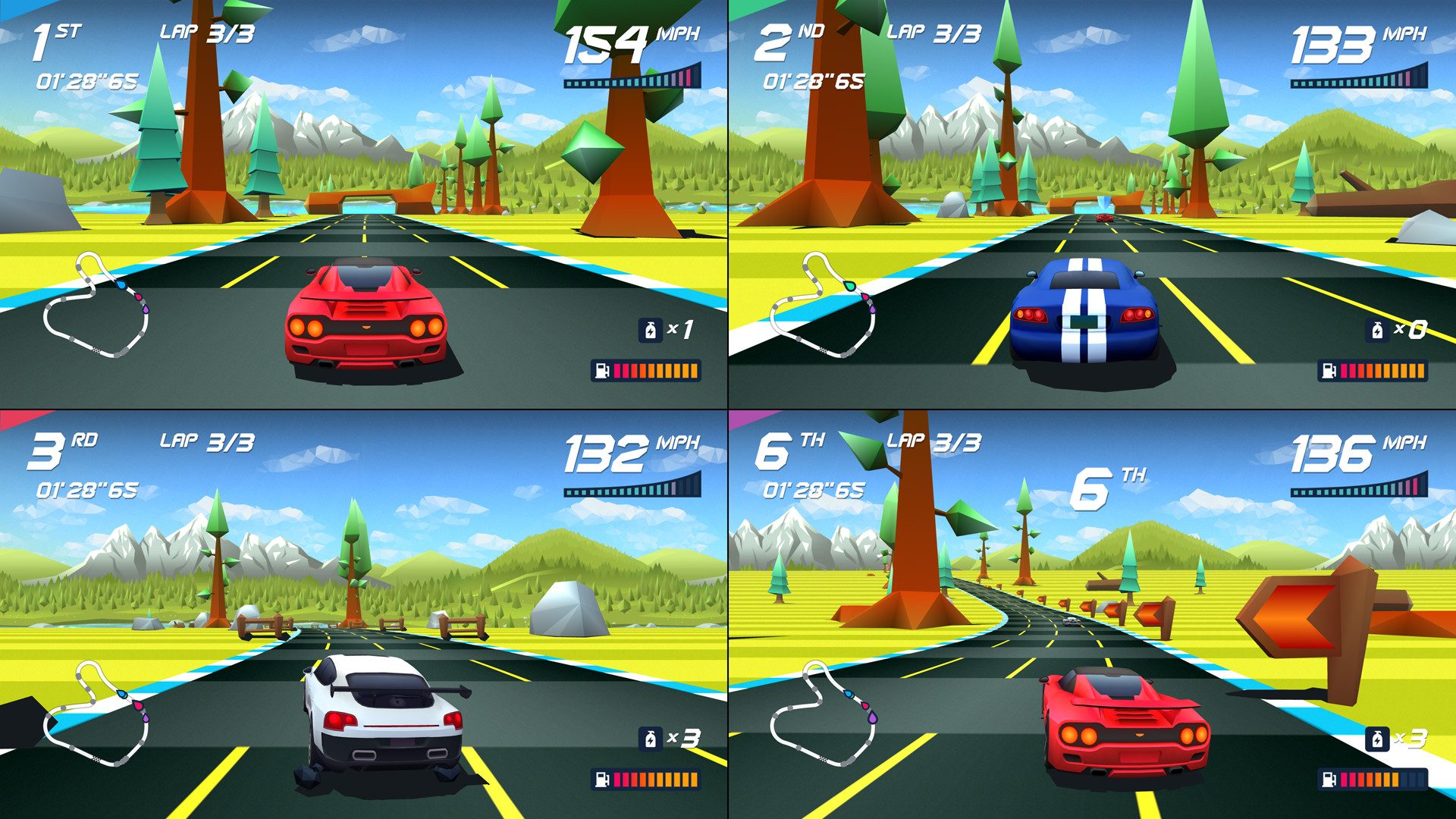
Horizon Chase Turbo features four-player, split-screen, local co-op racing.
-
Snowy Driving
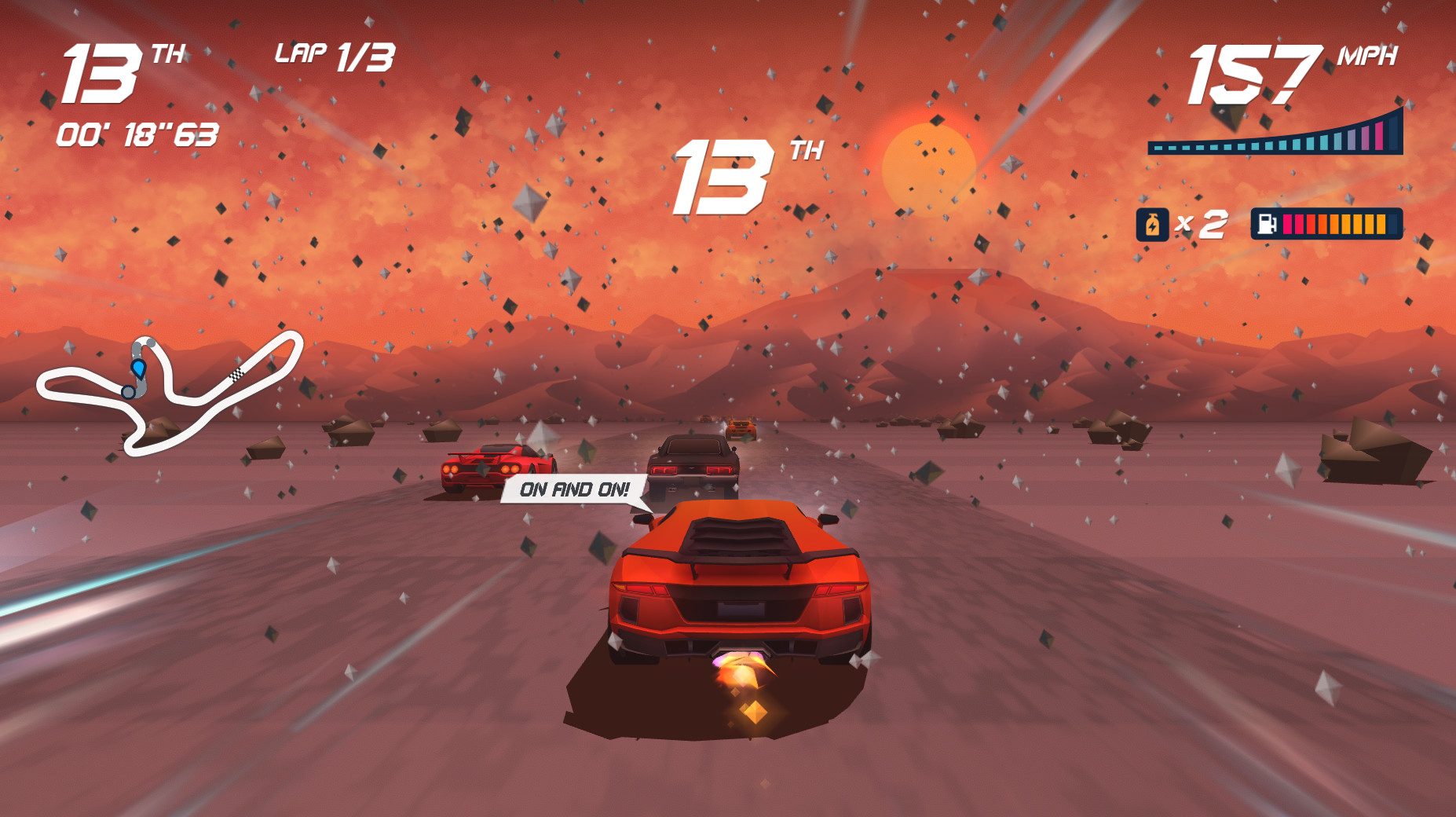
Weather effects can make turning a pain.
